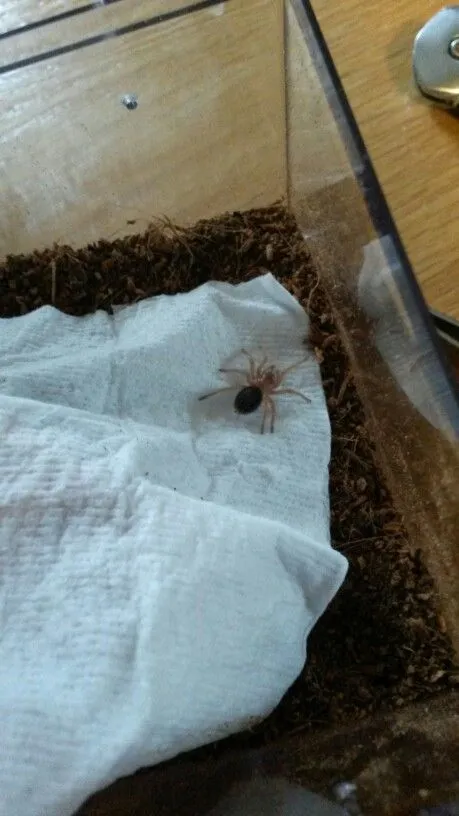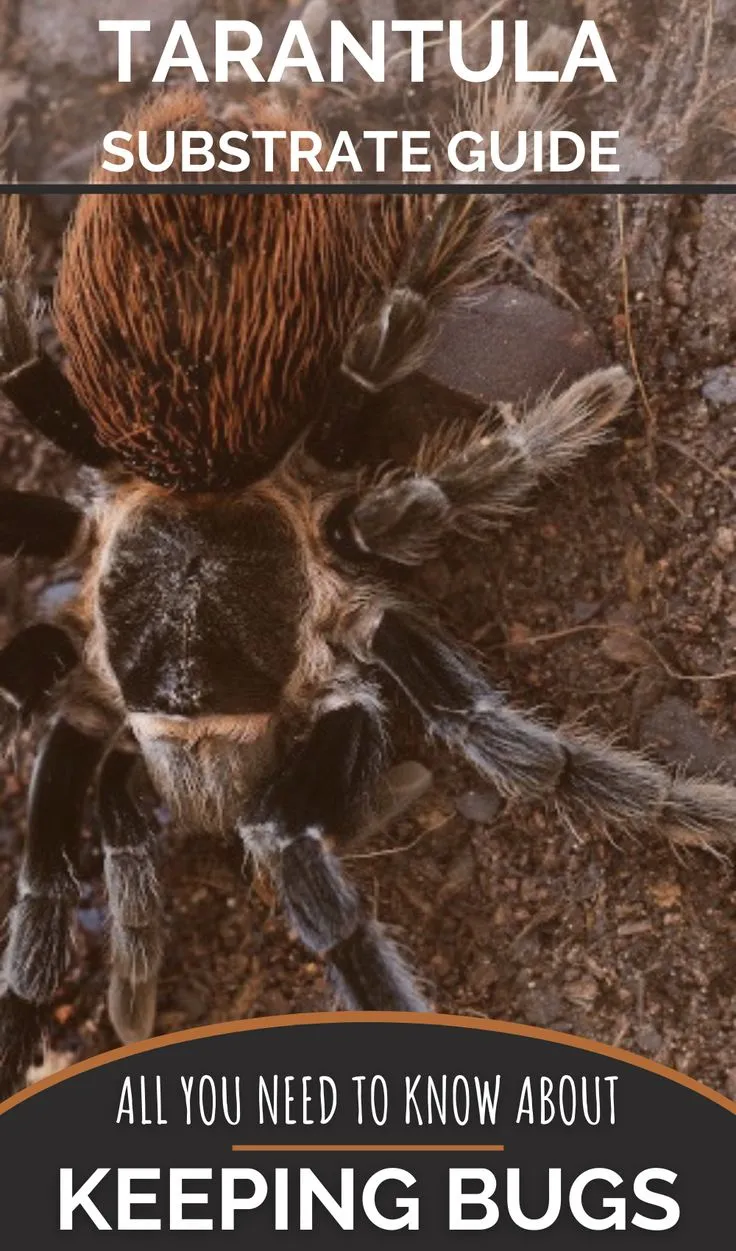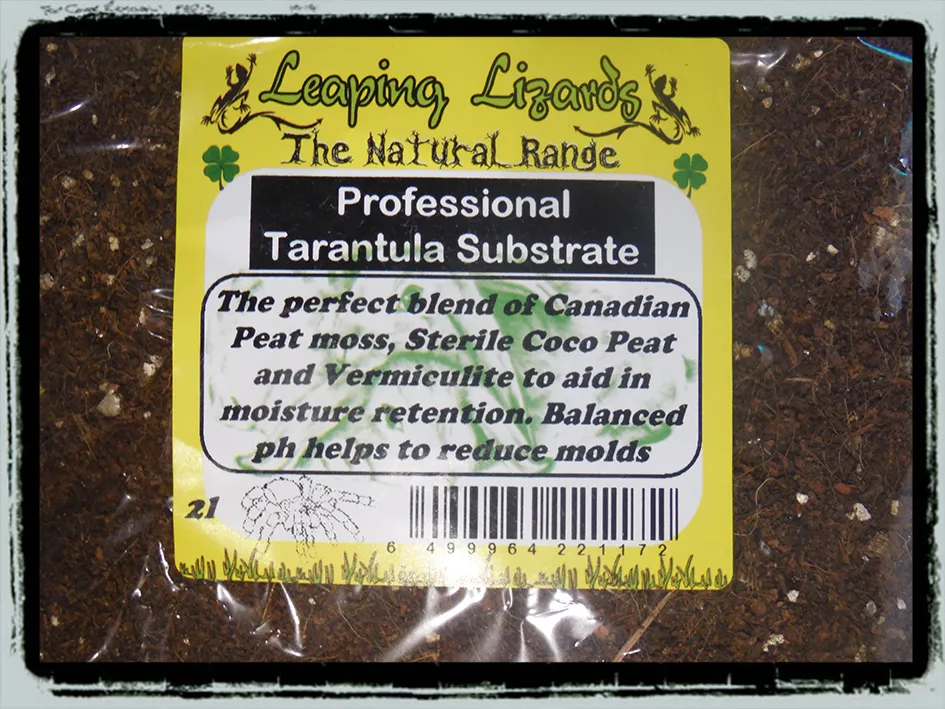Choosing the right substrate for your Chaco Tarantula is a crucial aspect of providing a healthy and comfortable environment for your pet. The substrate serves multiple purposes, from regulating humidity and aiding in burrowing to providing a sense of security. This comprehensive guide will walk you through everything you need to know about selecting, preparing, and maintaining the perfect substrate for your Chaco Tarantula, ensuring your eight-legged friend thrives in its enclosure. Understanding the specific needs of your tarantula is the first step toward creating a thriving habitat. By taking the time to learn about substrate, you can create an environment that mimics their natural habitat, which in turn promotes their well-being and encourages natural behaviors. So, let’s dive in and discover how to provide the best possible care for your Chaco Tarantula.
Understanding Chaco Tarantula Substrate Needs
The substrate in your Chaco Tarantula’s enclosure isn’t just bedding; it’s a fundamental component of their well-being. It plays a critical role in maintaining the correct humidity levels, which is essential for successful molting and overall health. Additionally, the substrate provides a medium for burrowing, allowing your tarantula to create a secure retreat where they can feel safe and comfortable. Providing the right substrate is about mimicking the conditions they would experience in their natural environment, which helps reduce stress and promotes natural behaviors. The right substrate choice will also affect how easy it is to clean the enclosure and keep it free of pests. Proper substrate management significantly contributes to the longevity and happiness of your Chaco Tarantula, creating an enriching environment that caters to their specific needs.
Why Substrate Matters for Your Chaco Tarantula
The importance of substrate cannot be overstated when it comes to Chaco Tarantula care. The substrate directly impacts your tarantula’s health and comfort, influencing both its physical and psychological well-being. This is especially true for species like the Chaco Tarantula, which are known to be terrestrial burrowers. Choosing the right substrate is essential for replicating their natural habitat and supporting their innate behaviors. Without a suitable substrate, your tarantula may experience difficulties molting, suffer from dehydration, or feel stressed due to a lack of a secure hiding place. The substrate also helps to regulate the enclosure’s temperature, providing a stable and consistent environment that minimizes fluctuations. In essence, the substrate is much more than just a floor covering; it’s an integral part of a thriving tarantula habitat.
The Role of Substrate in Humidity Regulation

Humidity is a critical factor in caring for a Chaco Tarantula, and the substrate plays a primary role in regulating it. The right substrate absorbs and retains moisture, slowly releasing it into the enclosure to maintain the appropriate humidity levels. This process is crucial for the tarantula’s respiratory health and molting process. Substrates like coconut fiber and peat moss excel at maintaining humidity. Regularly misting the substrate and monitoring humidity levels are essential for creating an optimal environment. If the humidity is too low, it can lead to failed molts and dehydration. In contrast, excessive humidity can promote mold growth and bacterial issues. Therefore, selecting a substrate with good moisture-retention properties and managing it appropriately is key to keeping your Chaco Tarantula healthy and thriving.
Substrate and Burrowing Behavior
Chaco Tarantulas are known for their burrowing behaviors, and providing a substrate that supports this is essential. The substrate should be deep enough for the tarantula to create a burrow where it can feel safe and secure. A good substrate allows the tarantula to express its natural instincts. Burrowing provides a safe haven for the tarantula, allowing it to retreat from perceived threats, molt in privacy, and regulate its body temperature. Substrates like a mix of coconut fiber and peat moss are ideal because they hold their shape well and allow the tarantula to dig and create tunnels without the risk of collapse. Without a substrate that facilitates burrowing, the tarantula may feel stressed, which can lead to decreased appetite and a less active lifestyle.
Best Substrate Options for Chaco Tarantulas
Selecting the right substrate is one of the most important decisions you will make when setting up your Chaco Tarantula’s enclosure. Various substrate options offer different benefits in terms of moisture retention, burrowing capabilities, and overall suitability for the tarantula’s needs. The best choice depends on your specific setup, the humidity requirements of the species, and your personal preferences. This section will delve into the most popular and effective substrate choices, providing you with the knowledge to make an informed decision and create the perfect environment for your Chaco Tarantula to thrive. Consider the ease of maintenance, availability, and cost when making your selection.
Coconut Fiber for Chaco Tarantulas

Coconut fiber, also known as coco coir, is a popular and effective substrate choice for Chaco Tarantulas. Made from the husks of coconuts, it’s readily available, eco-friendly, and provides excellent moisture retention. Coconut fiber is ideal for maintaining humidity, which is crucial for the health and molting process of your tarantula. Its texture allows for burrowing, enabling your Chaco Tarantula to create a secure and comfortable habitat. It also has natural antifungal properties, which can help prevent mold and fungal growth in the enclosure. Coconut fiber is an excellent all-around choice that caters to a wide range of needs in tarantula care. Its versatility and ease of use make it a favorite among tarantula keepers of all experience levels.
Pros and Cons of Using Coconut Fiber
Coconut fiber has many advantages as a substrate, but it’s also essential to consider its drawbacks. On the positive side, it excels at retaining moisture, making it ideal for maintaining the required humidity levels for Chaco Tarantulas. It also allows for excellent burrowing, which meets the tarantula’s need for a safe retreat. Coconut fiber is naturally resistant to mold and fungal growth, making it a relatively clean choice. However, it can sometimes be dusty, which may irritate sensitive tarantulas or their keepers. Furthermore, it may require more frequent spot cleaning compared to other options. The pH level of coconut fiber can vary, so it’s important to buy a reputable brand to ensure it is suitable for your tarantula. Understanding both the pros and cons will help you make an informed decision.
How to Prepare and Use Coconut Fiber
Preparing coconut fiber for your Chaco Tarantula’s enclosure is a straightforward process. Most coconut fiber comes in a compressed brick form, which needs to be hydrated before use. To prepare it, soak the brick in warm water until it expands fully, then squeeze out any excess water. The substrate should be damp, not soaking wet, to maintain the right humidity levels. After hydration, add a layer of approximately 4-6 inches of substrate to the enclosure, ensuring there’s enough depth for burrowing. Avoid packing the substrate too tightly, as this may make burrowing difficult for your tarantula. Check the humidity regularly using a hygrometer and mist the substrate as needed to keep the environment moist. Also, be sure to remove any uneaten food or waste to prevent the growth of mold or bacteria.
Peat Moss for Chaco Tarantulas

Peat moss is another excellent substrate choice for Chaco Tarantulas, prized for its moisture retention and ability to create a naturalistic environment. Peat moss is derived from the decomposition of sphagnum moss in bogs, providing a soft, absorbent medium that supports burrowing and helps maintain ideal humidity levels. It is often favored for its slightly acidic pH, which helps to prevent the growth of harmful bacteria and fungi. Using peat moss can create a more natural habitat for your tarantula, encouraging natural behaviors and reducing stress. It is especially useful in enclosures that need a higher humidity level. The earthy appearance of peat moss also enhances the aesthetic appeal of the enclosure, providing a visually appealing environment.
Pros and Cons of Using Peat Moss
Peat moss offers many advantages as a substrate option. It has excellent moisture retention, which is crucial for maintaining humidity. It’s also ideal for burrowing, as it holds its shape, allowing the tarantula to create secure tunnels. Its slightly acidic pH can help to inhibit the growth of harmful organisms. However, peat moss can sometimes compact over time, which can affect burrowing. It might require more frequent replacement than other substrates due to this compaction. Some keepers find it can be messier when disturbed, potentially resulting in more frequent cleaning. Furthermore, it can be more challenging to spot clean. Before selecting this substrate, evaluate your maintenance preferences and humidity requirements.
How to Prepare and Use Peat Moss
Preparing peat moss for your Chaco Tarantula is relatively simple. You typically purchase it dry, and before using it, you should hydrate it with clean water. Add water slowly to achieve a damp, not soggy, consistency. Ensure that the peat moss is evenly moistened to maximize its moisture-retaining capabilities. Spread a layer of about 4-6 inches in the enclosure, providing adequate depth for burrowing. It’s important not to pack the peat moss too tightly, as this could hinder the tarantula’s ability to burrow. Monitoring the humidity with a hygrometer is crucial. Mist the substrate as needed to maintain the proper moisture levels. Regular spot cleaning to remove waste and uneaten food is also essential to prevent mold and bacterial growth. Proper preparation and maintenance ensure your tarantula’s habitat remains healthy and supportive.
Other Substrate Options and Considerations

While coconut fiber and peat moss are excellent choices, other substrate options can also be used, often in combination, to create an optimal environment. The key is to consider the specific needs of your Chaco Tarantula and to select a substrate that supports its health and well-being. Mixing substrates, such as coconut fiber and peat moss, can offer the benefits of both. Adding leaf litter and sphagnum moss can create a more natural and enriching environment. However, it’s crucial to avoid certain substrates that can be harmful to your tarantula. Carefully consider all factors and choose the one that best suits your tarantula’s needs and your own preferences.
Mixing Substrates for Optimal Results
Mixing different substrates can be a great way to provide the best of both worlds for your Chaco Tarantula. By combining the properties of various materials, you can create a substrate that meets all the requirements of the tarantula, enhancing its environment. A popular mix combines coconut fiber and peat moss. Coconut fiber offers excellent moisture retention and burrowing support, while peat moss provides a slightly acidic environment that helps to prevent mold and bacteria. Other combinations may include adding a layer of vermiculite for added moisture retention or mixing in a small amount of play sand for better structural integrity. When mixing substrates, ensure they are well combined and provide a consistent environment throughout the enclosure. Monitor the humidity levels and adjust the misting frequency accordingly to maintain the appropriate conditions for your tarantula.
Adding Leaf Litter and Sphagnum Moss
Adding leaf litter and sphagnum moss to the substrate can significantly enhance the environment for your Chaco Tarantula. Leaf litter provides a natural, enriching addition that mimics the tarantula’s natural habitat. It offers a place for the tarantula to hide, forage, and feel more secure. Additionally, as the leaf litter decomposes, it adds nutrients to the substrate, contributing to a healthy ecosystem within the enclosure. Sphagnum moss helps retain moisture and aids in maintaining humidity. It can also be used to create microclimates within the enclosure, providing a humid retreat for the tarantula. Before adding, ensure the leaf litter is clean and free from pesticides, and the sphagnum moss is properly hydrated. These natural additions can enrich the enclosure and significantly improve the tarantula’s quality of life.
Avoid Certain Substrate Types

While many substrates are suitable, some materials should be avoided as they can be harmful to your Chaco Tarantula. Avoid substrates that are too dusty, as they can irritate the tarantula’s respiratory system. Cedar and pine shavings should never be used, as the oils present in these woods are toxic to tarantulas. Avoid using sand alone, as it doesn’t retain moisture well, making it unsuitable for maintaining humidity. Additionally, steer clear of substrates that are treated with chemicals or pesticides. These can be extremely detrimental to your tarantula’s health. Always prioritize the safety and well-being of your pet by selecting safe, nontoxic substrates and being cautious about their origin.
Maintaining and Monitoring Substrate
Proper maintenance and monitoring are crucial for keeping your Chaco Tarantula’s substrate in optimal condition. Regular checks and adjustments help to maintain the necessary humidity levels, prevent the growth of harmful mold and bacteria, and ensure the long-term health of your pet. This section will cover the key aspects of substrate maintenance, from checking humidity and spot cleaning to complete substrate changes, providing you with the knowledge and techniques needed to provide a healthy and thriving environment for your Chaco Tarantula. Consistency in your care routine contributes to the well-being of your tarantula and makes it a less stressful experience.
Checking Humidity Levels
Regularly checking the humidity levels within your Chaco Tarantula’s enclosure is essential for its health. Use a hygrometer to measure the humidity accurately. The ideal humidity range typically varies depending on the individual tarantula and its molting cycle, but generally, a range of 60-75% is recommended. Place the hygrometer inside the enclosure, away from direct misting, to get an accurate reading. Monitor the humidity daily and adjust your misting schedule to keep the levels within the ideal range. If the humidity is too low, the substrate may need to be misted more frequently. If the humidity is too high, ensure there’s good ventilation to prevent mold growth. Consistent monitoring and adjustments ensure your tarantula’s environment remains safe and comfortable.
Spot Cleaning and Complete Substrate Changes

Regular spot cleaning is a vital part of substrate maintenance. Remove any visible waste, such as uneaten food or fecal matter, as soon as possible to prevent mold and bacterial growth. Use a pair of tongs or a small scoop to remove waste carefully, being mindful not to disturb your tarantula too much. Depending on the substrate type, the frequency of spot cleaning will vary. For example, with coconut fiber, you should spot clean more frequently than with peat moss. Complete substrate changes should be done periodically, typically every 6-12 months, or sooner if there are signs of mold or other problems. When changing the substrate, remove the tarantula to a temporary enclosure, dispose of the old substrate, clean the enclosure thoroughly, and replace it with fresh substrate.
Signs of Substrate Problems
It’s important to be aware of the signs that indicate substrate problems. Mold growth is a major concern, often appearing as white or colored patches on the substrate. An excessive amount of condensation on the enclosure walls may indicate high humidity, which can lead to mold growth and other problems. Unpleasant odors can also be a sign of bacterial overgrowth or decomposition. Changes in your tarantula’s behavior, such as loss of appetite, lethargy, or spending excessive time at the enclosure’s top, can be indicative of a problem with the environment. If you notice any of these signs, address the issue promptly by adjusting the humidity, spot cleaning, or replacing the substrate. Early detection and intervention are crucial to the health and well-being of your Chaco Tarantula.
Choosing the right substrate and maintaining it properly are critical to ensuring your Chaco Tarantula thrives. By understanding the needs of your tarantula, selecting the appropriate substrate, and implementing a consistent maintenance routine, you can create a healthy and enriching environment. Regular monitoring, spot cleaning, and timely substrate changes contribute significantly to your tarantula’s well-being. As you become more experienced, you’ll find that providing the perfect environment becomes second nature, and you’ll take pride in the thriving habitat you’ve created for your fascinating pet.
